Ruinsara Tal & Bali Pass Trek:
Upcoming Bali pass trek starting on 1th June 2024 from Dehradun.
Lesser known Bali Pass trek is the trail to cross the watershed between Yamuna and its main tributary Tons river. Bali pass at ~ 16000 ft connects the Ruinsara – Har Ki Dun area with Yamunotri valley. This one is a moderate yet a next level trek. If you have already been to moderate treks like Roopkund, Rupin Pass or Goecha La then this is the next step forward. Bali Pass trek route is a relatively shorter duration trek which requires walking of less than 60 Km trail. Although the pass itself at ~ 16000 ft offers the variety of elements and associated challenges.
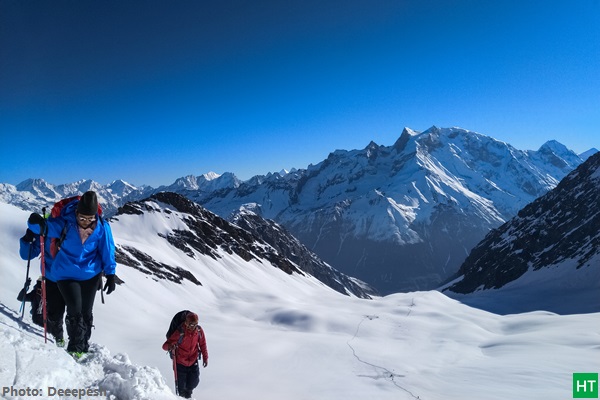
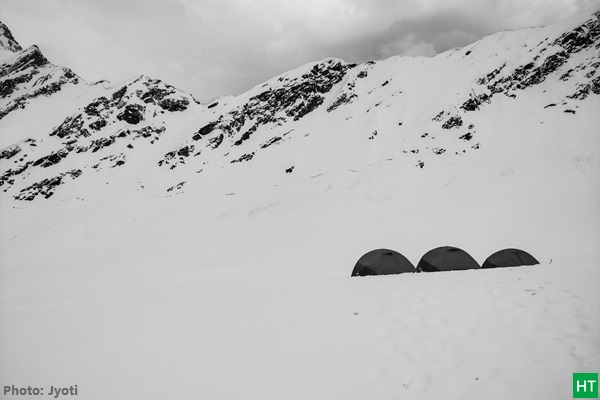
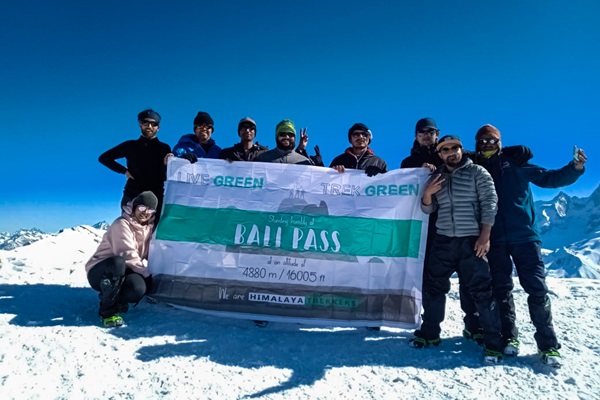

The trek can be split into two portions. Initially the lovely and gentle walk along the river valley to a beautiful shallow lake called Ruinsara Tal at the base of Mt. Swargarohini. Initially from Taluka you will follow traditional route to Har Ki Dun up to Seema, following Tamosa/Har Ki Dun nala. The we keep going along the valley to enter into Ruinsara Nala gorge and valley.
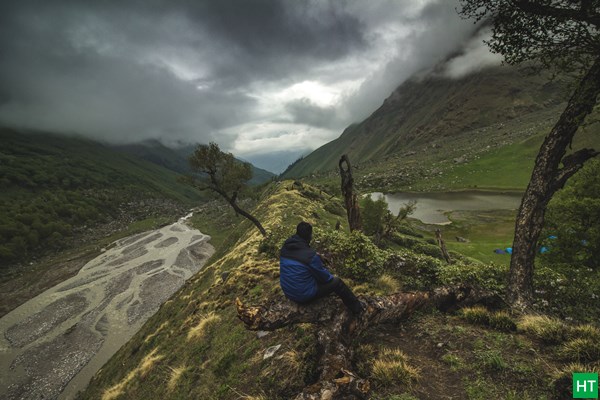
A time lapse video of Ruinsara Tal area:

Trail ahead of Odari produces the challenge and experience of walking on moraine ridge and boulder, and finally on the glacier to the snow/ice bound Bali pass. We will set up the base camp on moraine/snow before the final push to the pass. Last stretch to the pass is quite steep and can be pretty tiring. The views from the pass include magnificent views of Swargarohini group of peaks, Bandarpunch, Kalanag (Black peak) and the host of peaks to the east of Gangotri valleys.
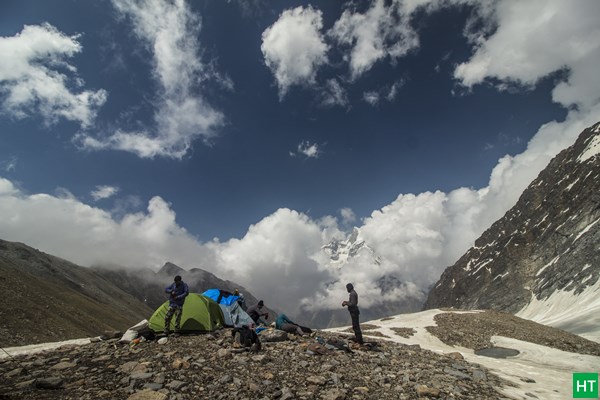

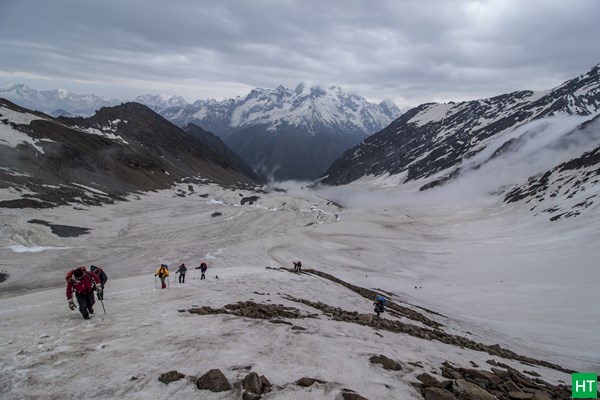
The descent from the pass is tricky and you need to negotiate either steep rock section on snow or taking the sharp ridge and traverse instead. Overcoming the descent from the pass, you have to cross a boulder region and then you are on meadows of upper Dhamni area. Surprise doesn’t stop here as the meadows finish abruptly and then you have to carefully handle the steep grass slope to finally into treeline. At the end of the trek you reach Yamunotri. In a nutshell during this trail we follow the main tributary of Yamuna, the Tons river to it’s origin and then descent following the main Yamuna river.
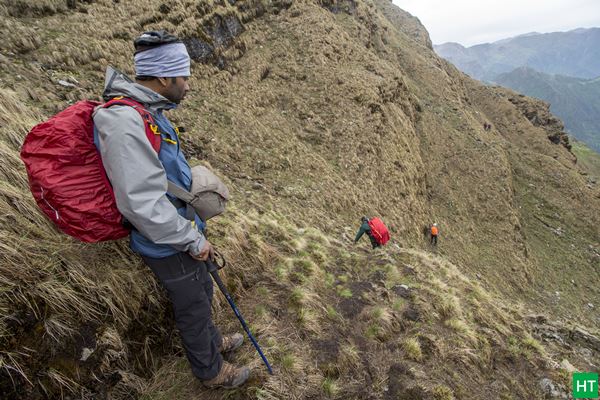
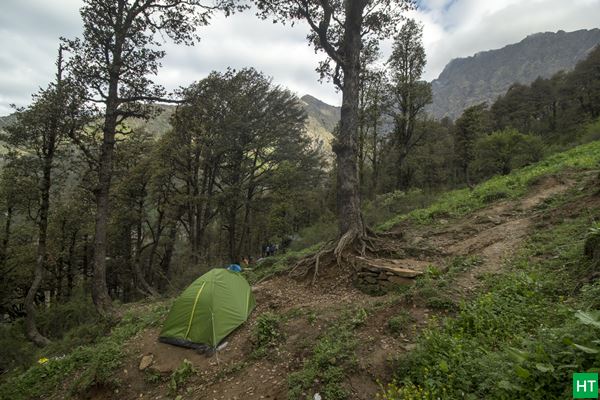
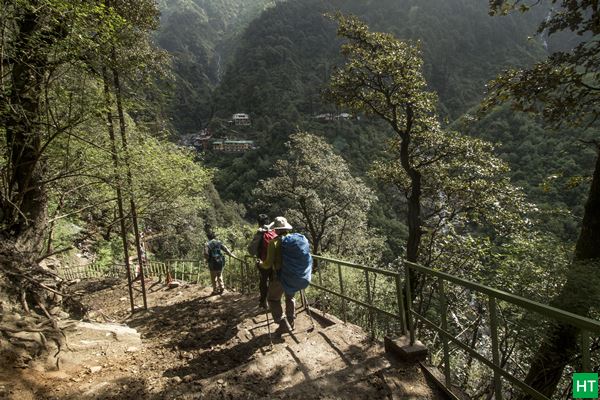
Brief Itinerary:
- You need to reach Dehradun on Day 1 morning (by 7 am) or the previous night. Return to Dehradun on Day 8 late evening (around 9 pm). Arrange your tickets for inward journey and return from Dehradun accordingly. We can arrange a car transport from Dehradun to Sankri and return to Dehradun. You pay directly to driver. This is NOT included in the TREK FEE.
- Following the high court order in August 2018, no camping is allowed at Ruinsara. We will camp at Unti Gad (2 Km before Ruinsara) inside treeline and visit Ruinsara in the afternoon.
Altitude and distance profile graph for Bali Pass trek:
From the below graph you will get an idea of the gradient of the trail and a rough pictorial distances between important points of the trek.

Why Bali Pass is a next level Moderate trek but not really a Difficult grade:
Bali Pass trek has shorter trail length around 60 Km and hence of shorter duration comparing to the “Difficult” grade treks that we classify as. It doesn’t require sustained walking on moraine debris or glacier or challenge of acclimatisation difficulties.
In spite of not being a Difficult trek, this should not be compared with popular “Moderate” grade treks like Roopkund, Rupin Pass, Hampta Pass or Goecha La. To begin with, this is not a popular route, so trails are not maintained at places. Due to monsoon and other natural erosion trail may produce unexpected bumps and need careful negotiation.
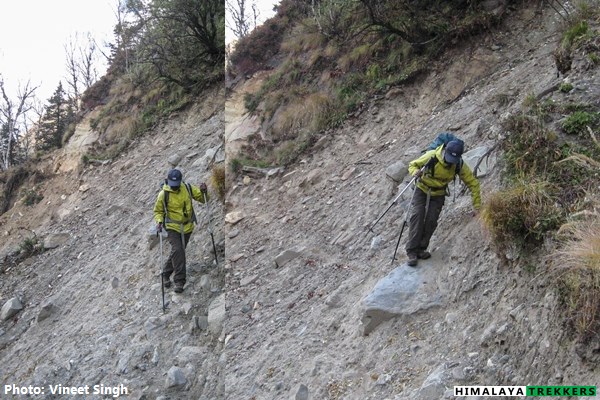
After Ruinsara Tal we take the ridge towards Bali Pass. Depending upon season and snowfall we will encounter snow after Odari camp. After Odari we will encounter median moraine of the glacier coming down from the top. The final ascent to the pass is steep and the descent is steeper on rock and snow/ice. Literally you may have to climb down from the pass.
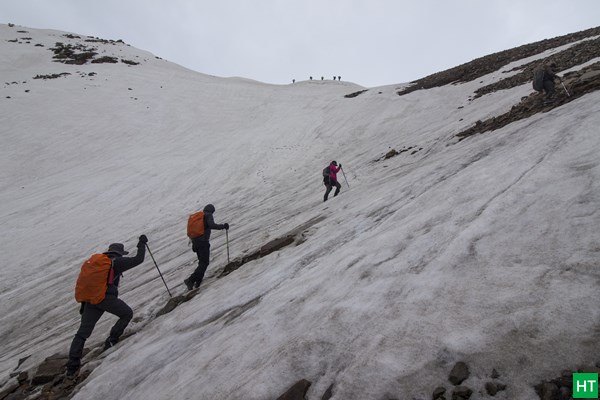
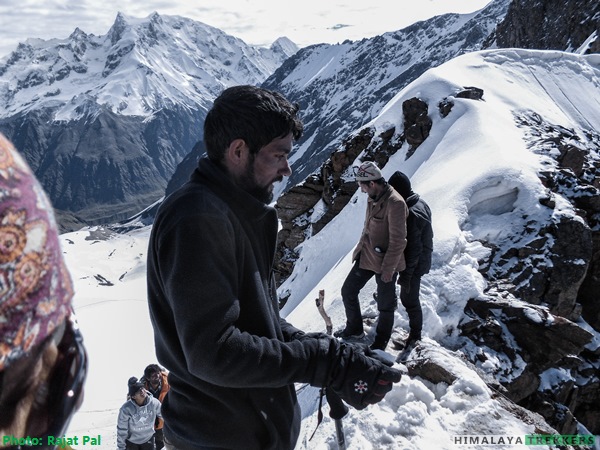
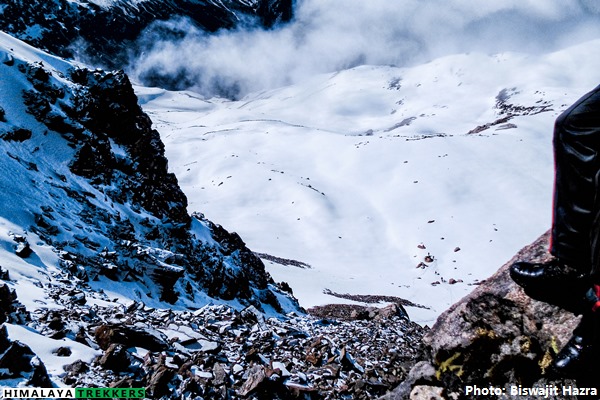
Camping at Ruinsara Tal:
As per Uttarakhand High Court order ( Petition No. : 123/2014 ) , one can not camp on alpine and sub-alpine meadows/grasslands, locally called “Bugyal. Following this order Forest department has revoked the permission of camping at Ruinsara area starting from September 2018. We will camp at Unti gad inside treeline by noon which is 2 Km before Ruinsara. After lunch we will visit Ruinsara Tal, explore the fascinating valley around, and finally return to Unti Gad camp.

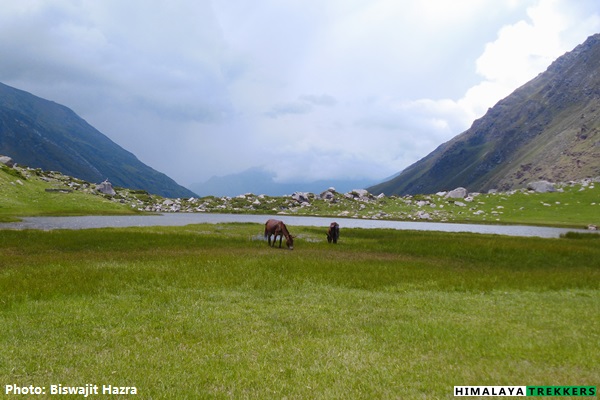
Which is the best time to visit Bali Pass, summer or fall/autumn?
Like all high altitude treks in Uttarakhand, you have two seasons/windows for Bali pass trek.
- Summer season starts as early as mid May, depending upon the snow deposition of last winter and ends by later half of June, as the monsoon progresses.
- Post monsoon begins in September and continues till later half of October.
Each season has its pros and cons. Here we will see how the landscape changes and weather differs from one season to another.
More greenery in May/June while contrasting foliage in Sep/Oct:
During summer forest and meadows turn greener and flowers bloom. From September fall colours appear, trees and grasses turn in to yellow, orange and brown. Both are a delight for your eyes.

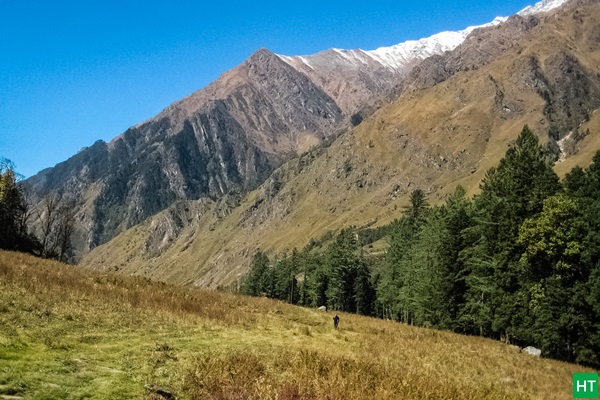

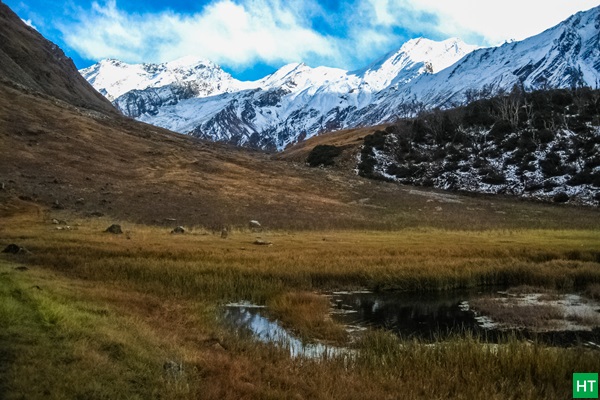

Snow conditions in summer and fall:
As the summer progresses deposited snow and glacier melts. You will get more frosty snow and ice during May/June. September remains least snowy and from October chance of fresh snowfall increases.

During summer day time temperature will be warmer where as after monsoon the temperature will start lowering. Around Ruinsara and ahead temperature will become significantly cold in October.
Now you have the understanding of each season and their differences. Give us a call in case you are not sure about which season to choose.
Temperature & clothing required:
Pre monsoon/Summer (May/June): Day time weather remains warm, specially if it is sunny and scorching and can go as high as 25/30°C. Night/early morning temp at Bali Pass base can be around 0°C to 5°C.
Post monsoon/Fall (Sep/Oct): From October temperature starts cooling down. At Ruinsara lake temperature can plummet to freezing in the night/early morning. Be prepared for 0°C or lower on the highers camps.
a) A base layer, can be a thermal layer or a quick dry t-shirt.
b) A heavy jacket (Double layer or Fleece jacket ) as middle layer.
c) A windproof with hood as the outer layer.
Access to Bali Pass trek base (Sankri):
We will arrange a pickup from Dehradun railway station to Sankri and back to Dehradun. This will be shared by the team members on actual basis and paid directly to the driver. The fare is ₹ 6500 for a Tata Sumo from Dehradun to Sankri. This can accommodate 6 to 8 people. Similarly it is approximately ₹ 8000 from Janki Chatti to Dehradun back. . This is NOT included in TREK FEE.
To reach the trek base Sankri independently/public transportation check the details in GETTING THERE TAB.
Download the list of things to carry in Bali Pass trek
Why treks with HT?
| Duration | 8D/7N |
|---|---|
| Grade | Moderate |
| Physicality | 7.5/10 |
| Highest Point | 4880 m/16005 ft |
| Trail Length | 58 Km |
| Expertise: | 10 years on ground experience |
| Support staff: | Qualified local & office staff |
| Group size: | Small groups up to 15 |
| Insurance: | Travel insured trek and tour itinerary |
| Easy Bookings: | 25% Booking Deposit |

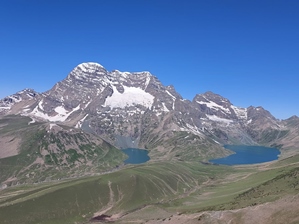
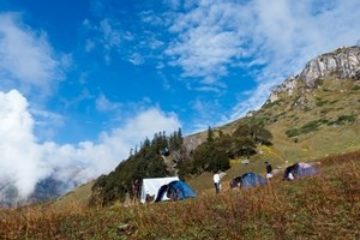
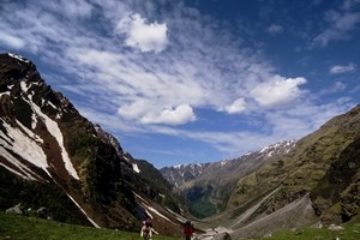
Tour Reviews
There are no reviews yet.
Leave a Review